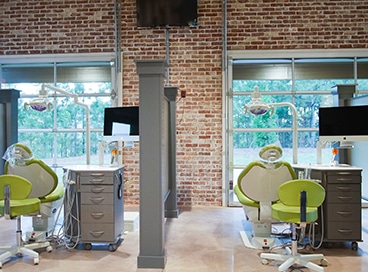Orthodontics Fundamentals Explained
Orthodontics Fundamentals Explained
Blog Article
Not known Details About Orthodontics
Table of ContentsThe smart Trick of Orthodontics That Nobody is DiscussingThe Buzz on OrthodonticsWhat Does Orthodontics Mean?Examine This Report on OrthodonticsOrthodontics for BeginnersThe Basic Principles Of Orthodontics Not known Incorrect Statements About Orthodontics
You might feel some discomfort for a while when your braces are initially placed on and when they are readjusted. It will certainly take a little time to obtain utilized to your dental braces and they can trouble your lips and cheeks - Orthodontics. If this occurs, an alleviation wax can be put on your dental bracesIt is essential to clean your braces along with the front, back and eating surfaces of the teeth. Your dental practitioner or orthodontist will certainly provide you ideas on just how to brush and on how to floss making use of floss threaders. After flossing, roll it up in a little round and put it in the waste.
Moms and dads ought to supervise their children to make certain they do a good work cleaning their teeth and braces and follow the recommendations of their dentist or orthodontist. If you have dental braces, do not bite on hard points such as ice and nuts. Do not chew the ends of pens or pencils.
The Facts About Orthodontics Revealed
Problems that are not fixed can cause the treatment to last much longer. The traditional steel dental braces, there are tooth-coloured ceramic braces that are less visible. Dental braces and elastics can likewise be multicoloured.
It overviews the direction of tooth activity and jaw growth in somebody who is still expanding. There are various sorts of headwear and they may be used throughout any part of the orthodontic therapy. Your orthodontist or dental practitioner will reveal you how to place on the headwear and inform you for how long to use it daily.
3 Easy Facts About Orthodontics Explained
They might need to be put on at all times or part of the moment. Tooth removal may be needed if your teeth are crowded or if a tooth is badly out of position. Jaw surgical treatment (or orthognathic surgery) might be required when there are significant differences in the dimension or setting of the upper and lower jaws.
An orthodontist is a dental professional trained to identify, protect against, and deal with teeth and jaw irregularities. Orthodontists work with people of all ages, from youngsters to grownups.
Orthodontics Things To Know Before You Get This
All orthodontists are dental professionals, however not all dental professionals are orthodontists. Orthodontic residency programs use intensive, focused instruction for oral specialists. They concentrate on 2 areas: How to correctly and securely relocate teeth How to properly guide advancement in the teeth, jaw, and faceOnce an orthodontist has completed training, they have the option to become board accredited.
Getting My Orthodontics To Work
If you have just minor malocclusion, you may be able to use clear braces, called aligners, rather than typical braces. Some people require a headgear to help relocate teeth right into line with stress from outside the mouth. After dental braces or aligners, you'll require to put on a retainer. A retainer is a custom-made tool that keeps your teeth in location.
They're her explanation usually used on children. They can produce added space in the mouth without needing to pull teeth. If you have a serious underbite or overbite, you may require orthognathic surgical treatment (additionally called orthodontic surgical treatment) to lengthen or shorten your jaw. Orthodontists use cords, medical screws, or plates to support your jaw bone.
Orthodontics for Dummies

Orthodontists might do surgical procedure, exams,X-rays,and even more to help you attain a more comfy, much healthier smile. An orthodontist is concentrated on your bite, so something like a cracked tooth would certainly be taken care of by a dental professional. Orthodontists are dental practitioners yet not all dental practitioners are orthodontists. Orthodontists are concentrated on your bite, or the means your teeth meshed, and the straightness of your teeth.
One of the signs of a lovely smile is a healthy and balanced set of teeth and great oral wellness. Most people have actually gapped, misaligned, irregular teeth that can make them imperfect.
The smart Trick of Orthodontics That Nobody is Discussing
Orthodontic treatment is understood for its ability to transform smiles, yet its benefits prolong beyond simple aesthetic appeals. Some of these advantages are: One of the considerable orthodontic home appliances is that it launches a transformative procedure beyond tooth placement.
These adjustments are essential for keeping progress and making certain the therapy stays on track according to the established plan. The orthodontist creates an individualized treatment strategy based on the analysis documents and the person's unique requirements and choices. This strategy outlines the suggested activity to deal with the identified orthodontic concerns and attain the preferred outcome.
Report this page